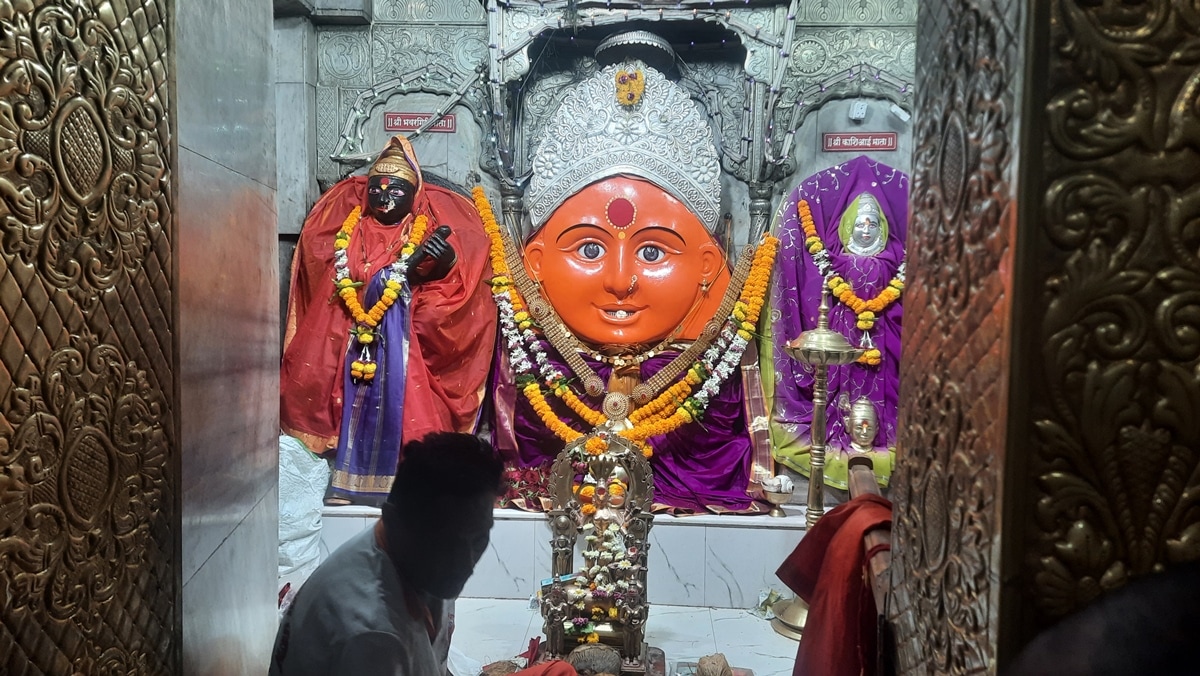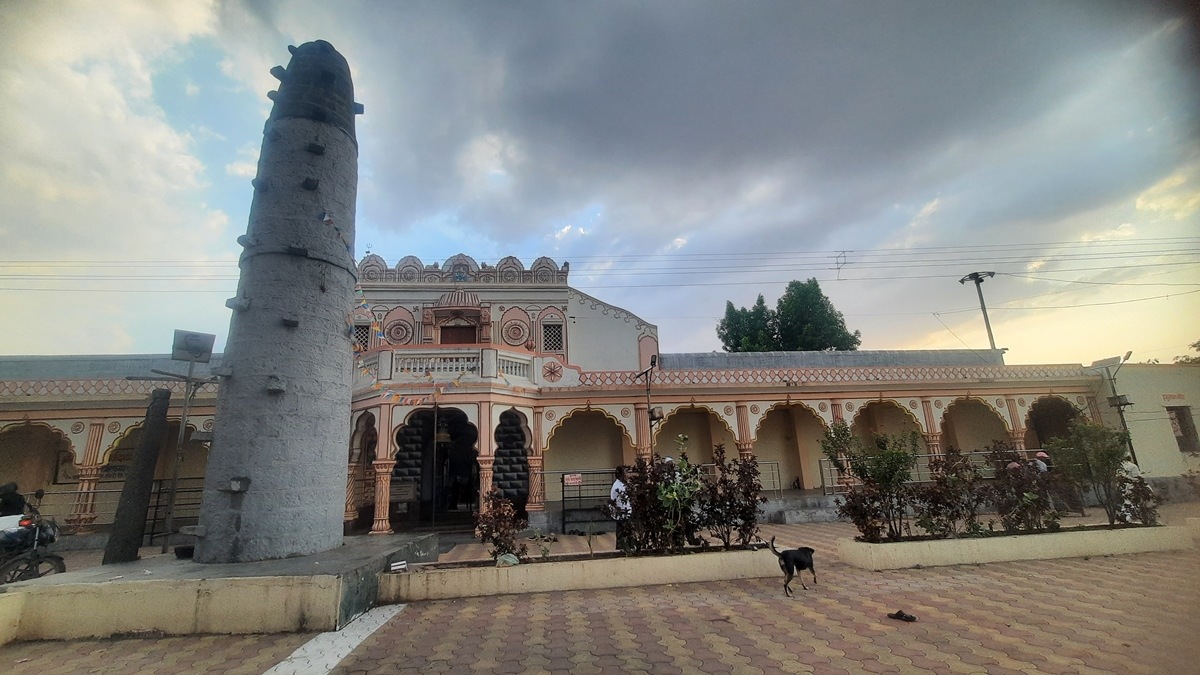 A meat shop in Pune that specialises in selling 'Bolhai Mutton'.
A meat shop in Pune that specialises in selling 'Bolhai Mutton'. “Bolhai.”
It’s a word that is peculiar to Pune, often confounding visitors, even local residents. It is found on signboards of meat shops or heard in restaurants where servers inform customers that the establishment also serves ‘Bolhai Mutton’.
To many outsiders – and insiders who weren’t born in families that follow the tradition- the concept of ‘Bolhai’ remains an enigma beyond the basic impression that it’s a kind of meat.
So what’s Bolhai Meat?
Bolhai or ‘Bolhai Che Mutton’ (Meat of Bolhai) essentially means the flesh that the Bolhai Mata, a deity in a temple on Pune’s outskirts allows devotees to eat. This meat is ‘sheep meat’ (also called mutton). The devotees are barred from eating goat meat (or chevon).
‘There’s a clear dichotomy,” says Sachin Kambale, a city-based meat seller. “Out of every 10 Pune native families, as many as nine tend to eat sheep meat and painstakingly avoid consuming that of goat. It’s the complete opposite for people who hail from places outside Pune district, especially those from beyond Satara or Ahmednagar.”
According to experts in local culture, devotees of Bolhai, who largely come from Pune District and parts of Satara, Sangli and Ahmednagar, believe that they will develop ailments of the skin if they consume goat meat.
“People who develop skin ailments also come here believing that they made the error of eating goat meat. They are asked to do the olanda (the symbolic act of the deity stepping over and crossing the devotee’s body) and take a dip in the temple lake known as Moti Sagar. If they are cured, some of them – by their own will – do an animal sacrifice. This has to be of sheep,” Baliram Gawade, the president of the Shri Bolhai Devsthan Trust, Wadebolhai, told The Indian Express.
He, however, emphasised that the deity does not accept offerings of meat. “The only naivedya (offering) acceptable to Bolhai is Puran Poli,” said Gawade.
Professor Ambadas Bhosale, who has authored a booklet on the deity, believes that there can be an economic angle behind the belief. “The region has a considerable population from Dhangar community who rear sheep. Generally speaking, goat meat is much more popular than that of sheep, in the state as is elsewhere. This superstition gives this less popular meat an edge and is an economic boon for the shepherd community.”
 Idol of Bolhai Mata inside the temple at village Wadebolhai. (Express photo by Atikh Rashid)
Idol of Bolhai Mata inside the temple at village Wadebolhai. (Express photo by Atikh Rashid) Where is the Bolhai temple?
The temple located in village Wadebolhai, 10 kms off Pune-Ahmednagar Highway, is built in Hemadpanthi black stone and lime architectural style with elaborate stone carvings adorning its pillars. The devotees believe that it has ancient origins. The outer compound was built in 1931 on the orders of King of Baroda Sayajirao Gaikwad, as per an inscription on the main door.
As per Professor Bhosale, the local legend about the origins of the temple goes as follows: the deity is an aggressive manifestation of Goddess Parvati who assumed a menacing form to rebuff an attempt by Lanka King Ravana to abduct her in his ‘vimana’. The petrified Ravana then pushed her off and she landed at the location where the temple today stands.
There’s another legend about the origin of the name of the deity, as per Prof Bhosale. “Once, Goddess Parvati placed a bet with Lord Shankar that she will deceive Lord Rama. She took Sita’s form and went to Rama. Immediately recognising Parvati, Rama said, ‘Bol Aai, (Tell me mother!). This led to the deity deriving her name from words – ‘Bol-Aai’ – to Bolhai’,” shared Prof Bhosale. He said that he had collected these legends from elderly people from the village and neighbouring areas.
 Exteriors of the Bolhai Mata temple. (Express photo by Atikh Rashid)
Exteriors of the Bolhai Mata temple. (Express photo by Atikh Rashid) Growing influence
Rahul Shinde – a priest at the temple – says that the popularity of the deity is growing fast. “Earlier, people mostly from the Pune district and surrounding areas used to come here. Now, we have visitors from Nashik, Dhule and even other districts, especially on Sundays when a special arati is performed. In the month of Ashwin, a Maha Yatra is held on the fourth Sunday in which a large number of devotees participate.
“The belief or superstition that the deity provides relief to those suffering from skin issues has helped it with popularity,” said Prof Bhosale.
Over the years several temples dedicated to Bolhai Mata have come up in Pune districts including a few in Pune city. Outside Maharashtra, about a century-old palatial temple of the deity stands in Vadodara which was constructed on the orders of Sayajirao Gaikwad.